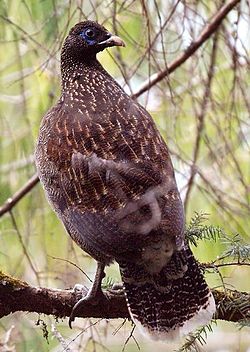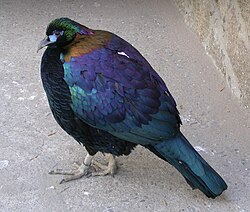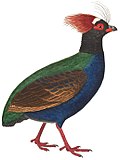| Monal | |
|---|---|
 | |
| Himalayan monal (Lophophorus impejanus) | |
| Scientific classification | |
| Kingdom: | Animalia |
| Phylum: | Chordata |
| Class: | Aves |
| Order: | Galliformes |
| Family: | Phasianidae |
| Tribe: | Lophophorini |
| Genus: | Lophophorus Temminck, 1813 |
| Type species | |
| Lophophorus refulgens [1] = Phasianus impejanus Temminck, 1813 | |
| Species | |
A monal is a bird of genus Lophophorus of the pheasant family, Phasianidae.








